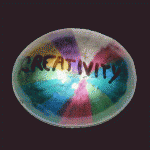How to Find and Amplify Creativity?
 In 2010, IBM ran a survey of 1,500 CEOs and found that the most valuable management skill was no longer “operations” or “marketing” but “creativity.” Since then BCG, Accenture and other consultancies have confirmed the global skill shift. Yet, only 9% of all public and private corporations in the US do any product or service innovation, according to the NSF’s Business R&D and Innovation Surveys of 2010 and 2011. CEOs say that creativity is a crucial leadership skill, but few apparently have it.
In 2010, IBM ran a survey of 1,500 CEOs and found that the most valuable management skill was no longer “operations” or “marketing” but “creativity.” Since then BCG, Accenture and other consultancies have confirmed the global skill shift. Yet, only 9% of all public and private corporations in the US do any product or service innovation, according to the NSF’s Business R&D and Innovation Surveys of 2010 and 2011. CEOs say that creativity is a crucial leadership skill, but few apparently have it.
And no wonder. Managers are trained in the values of efficiency and the skills of quantitative analytics. That’s what most Americans believe in and what most business schools teach. So we now face a difficult transition. After decades of managing to squeeze out profits, how can executives quickly shift to amplifying the creative capacities of their people?
First, map your circles of creativity. Businesses are pyramids built to promote efficiency. But creativity is generated within circles — playgrounds — where a small number of highly talented people, usually in twos, threes or small teams, work. Many of these are formal — labs, product development, design. These are where “creatives” are supposed to work. But there are many more circles that are invisible. Most big corporations have hundreds of people who are sharing ideas, trying things out, connecting existing domains of knowledge in new ways, below the radar of supervision. This can happen as often on the assembly line as it does in a chemistry lab. But it’s not always viewed as “creativity”, and many people don’t see themselves as “creative,” even if they are. When you map your creativity circles, they almost always surprise.
But generating new ideas, even if they’re original, is not enough. Creativity needs to scale in order to generate economic value. So you also need to identify your creativity brokers — people with good judgement and access to resources. Experienced executives are the ones who can better predict when new concepts have real potential; they’re the “wise eyes” to complement the “fresh eyes” on a task. They’re also the ones who can connect your creativity circles to the financial, prototyping, marketing they need. Finding these brokers can also lead to surprises. They have many official titles, from general manager to vice president to assistant to the CEO.
At the top, it’s also important to move toward multi-generational leadership teams. In a period of cascading change, we are all immigrants to new technologies and new shifts in culture. As hard as we try to immerse ourselves, we simply cannot know as much as someone who embodies these changes. The young founders of Google and Facebook were wise enough to bring in more experienced talent as they scaled their start-ups. Older managers of established corporations should be wise enough to do the reverse: bringing in young talent to expand their capabilities.
You should also be ready to change your consumer frame. User experience (UX) was a bold concept in its day and moved us away from merely meeting “needs”. But it is obsolete. People today participate with companies in the design and purchase of products. “Experience” is too passive a term to describe the relationship. User engagement (UE) is the new creative competence for the future. Think about aura — the things that beckon you and keep you interested — and design it into your products and services as Apple and Nike have done.
Most corporations with decades of building a culture of efficiency can’t organically transform themselves into a den of creativity. They shouldn’t try. The odds of success are pretty low. IBM did it. P&G is still trying. GE may make it. But most others won’t. Established companies can, however, be a platform for creativity. They can learn to go outside their own walls to identify creativity they can leverage, buy and then scale.
Creative competence is like a sport. You can train for it and increase the capacities of yourself and your organization. If you get good at it, you can also transform it into real economic value on a massive scale.
By BRUCE NUSSBAUM, the author of Creative Intelligence: Harnessing the Power to Create, Connect and Inspire (Harper Business, 2013). A former assistant managing editor for Business Week



